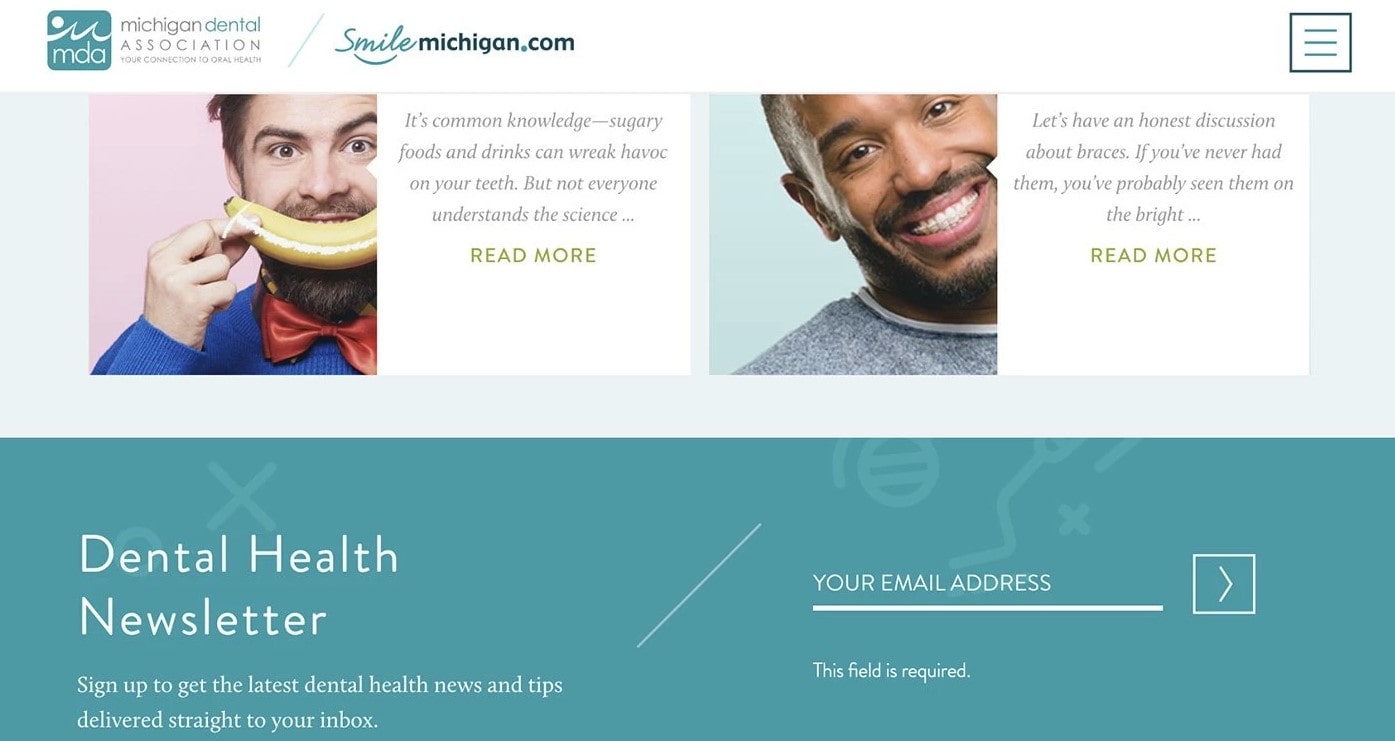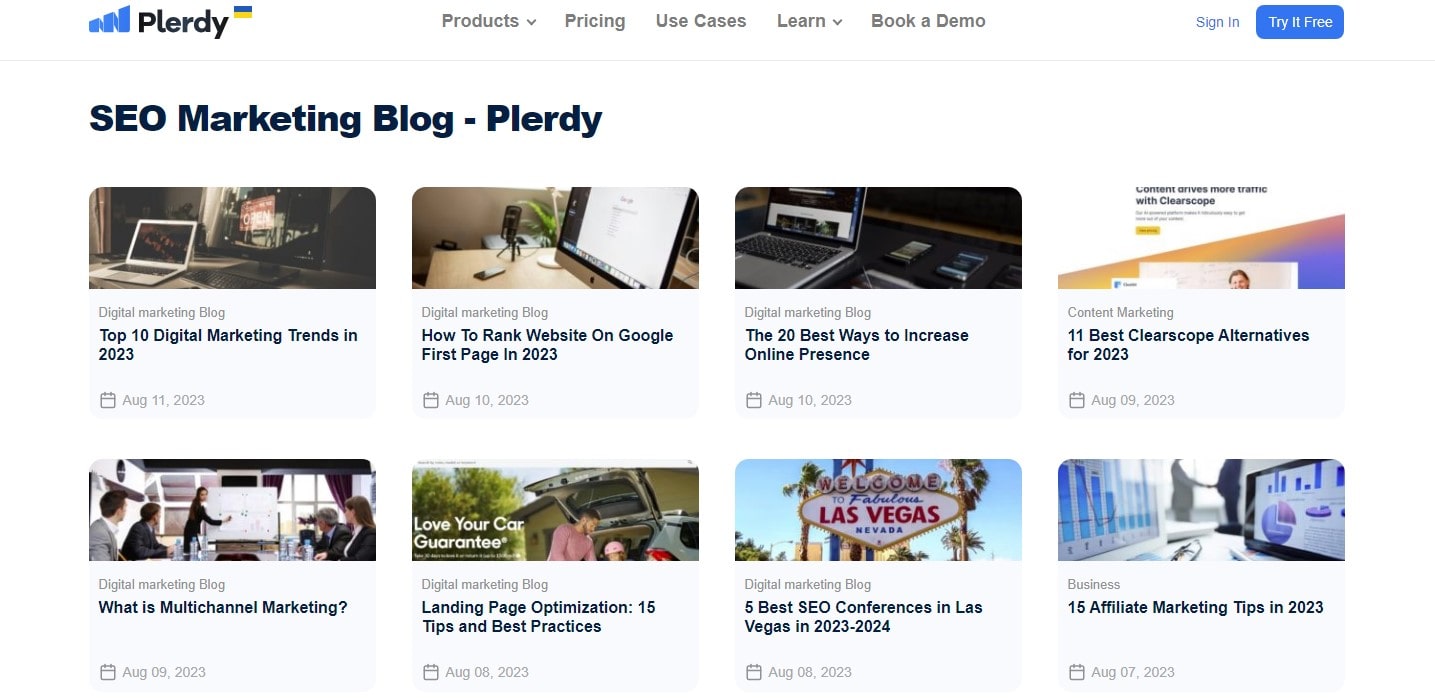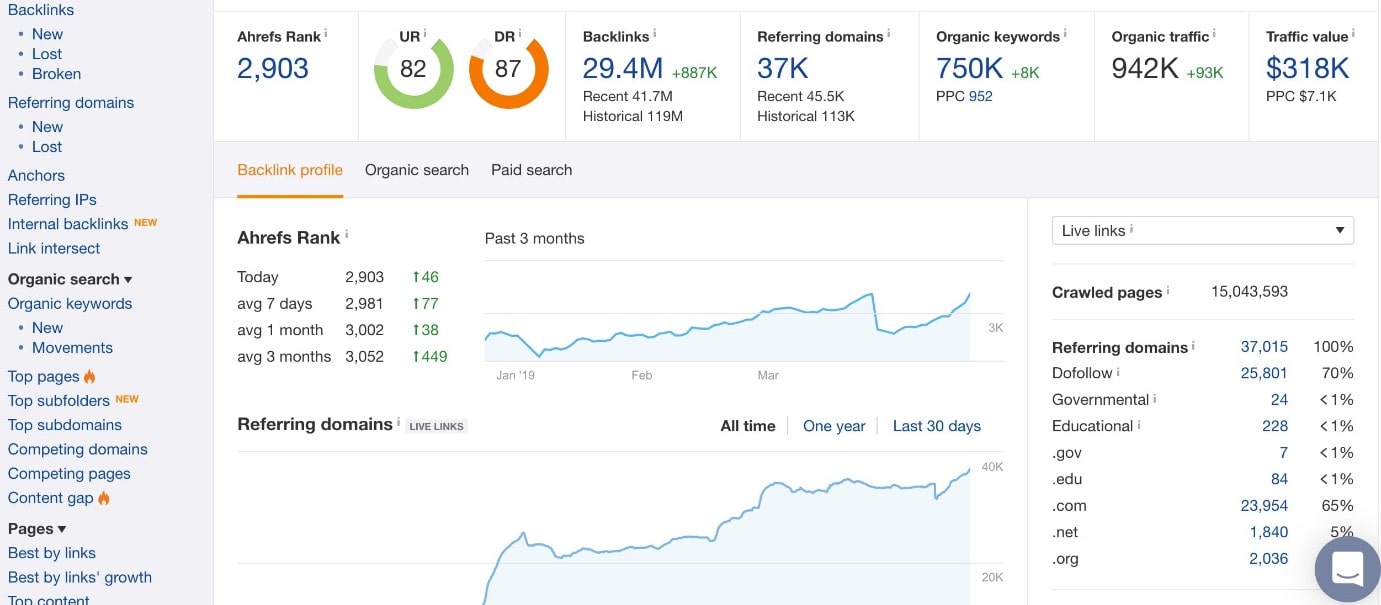Dive into the dynamic domain of outbound marketing—a strategy where businesses initiate the conversation and send their message out to their audience. From traditional methods like TV commercials and radio ads to contemporary techniques like targeted emails, outbound marketing is a powerhouse of possibilities. Here’s a snapshot of what it entails:
- Broadcasting techniques: think TV and radio ads.
- Direct mail: physical promotions.
- Telemarketing: yes, those phone calls!
- Targeted online ads: you’ve seen them on your favorite websites. ?️

But why stop at just understanding outbound marketing? Elevate your strategy with Plerdy, a cutting-edge tool tailored for CRO & UX, bringing clarity and efficiency to your campaigns. Ready to amplify your outreach? Dive into the details below and harness the full power of outbound strategies! ⚡
Defining Outbound Marketing
Advertising, direct mail, cold calling, and other first-contact approaches are all examples of outbound marketing. Unlike its inbound counterpart, where customers come to you, outbound marketing requires you to actively reach out to potential clients.
In the digital age, outbound marketing still plays a crucial role in various sectors:
- Technology Industry: Tech companies often use email campaigns and targeted ads to showcase innovations and updates.
- Healthcare Sector: Medical firms may use telemarketing to promote healthcare products, educational materials, and services to practitioners.
- Fashion Industry: Design houses frequently turn to glossy magazine ads and fashion shows to flaunt their latest collections.
Outbound marketing does more than just push a product – it builds brand awareness, fosters relationships, and creates a strong foothold in the market. By employing a well-strategized mix of print, TV, radio, and online ads, companies can appeal to a broad audience. The methods might vary, but the core principle remains: engaging customers with compelling messages that resonate with their needs and interests. The landscape of outbound marketing continuously evolves – it’s not just about selling; it’s about connecting, engaging, and leaving a lasting impression. It remains a robust strategy that brings value to both businesses and consumers.
Understanding the Pros and Cons of Outbound Marketing

Outbound marketing, characterized by its proactive approach to reaching customers, carries both merits and drawbacks. The following details the essential pros and cons:
Pros Outbound Marketing:
- Broad Reach: Through mediums like television, radio, and print ads, outbound marketing casts a wide net, engaging audiences across various demographics.
- Immediate Impact: In the automotive industry, for instance, flashy billboards can quickly grab attention, driving interest in specific car models.
- Controlled Messaging: Financial service companies often carefully craft outbound marketing materials to communicate complex services, ensuring clarity and compliance.
Cons Outbound Marketing:
- High Cost: Outbound marketing can strain budgets. TV commercials for luxury products, such as high-end watches or designer handbags, often require significant investment.
- Potential Intrusiveness: Cold calls by insurance companies or unsolicited emails from educational institutes may be seen as invasive, causing frustration among recipients.
- Measurability Challenges: Gauging the success of a print ad campaign for a supermarket chain might not be as straightforward as with digital campaigns, making ROI determination more complex.
Outbound marketing’s ability to reach mass audiences ensures that it continues to play an essential role in modern advertising. Yet, it’s vital to navigate potential pitfalls and align strategies with current customer behavior and preferences. Brands in every industry may create effective campaigns that reach their intended consumers, build brand loyalty, and increase sales by weighing the benefits and drawbacks of outbound marketing strategies.
Tips for Effective Outbound Marketing
Scrutinizing the list of “What is Outbound Marketing: Best Tips,” it’s evident that the old-school methodologies of pushing your message to consumers still hold water, albeit in a modernized form. From cold calling to direct mail, these tactics can indeed serve as the bedrock of a multifaceted marketing strategy. However, it’s crucial to approach outbound marketing with a fresh twist, integrating data-driven insights and automation to ensure you’re not just throwing spaghetti at the wall to see what sticks.
Outbound Marketing Tip #1: Clearly Define Your Target Audience
Clearly defining your target audience is a pivotal step in crafting a successful outbound marketing strategy. Whether it’s radio ads for a local eatery or online banners for a cutting-edge tech gadget, understanding who you’re communicating with shapes every element of the campaign. The right audience identification ensures that the message hits the mark.
Here’s how some specific industries approach this critical stage:
- Fitness Industry: A gym promoting weight-lifting classes might target young adults with an interest in bodybuilding through targeted social media advertisements.
- Travel Industry: A cruise company may direct mailers to retirees, offering exclusive deals on leisurely getaways.
- Home Improvement Sector: TV commercials for DIY tools might aim at homeowners looking to undertake renovation projects.
In all these instances, marketers identify key demographics, preferences, and behaviors to fine-tune the outbound marketing effort. They align the campaign’s tone, visuals, and message with the identified target audience, eliminating wasted effort on unresponsive segments.
Through a precise understanding of who will buy, use, or engage with a product or service, businesses can create personalized, effective outbound marketing campaigns. By tailing a message to resonate with the audience’s needs, interests, and pain points, companies can foster engagement and build lasting relationships, ensuring that their marketing investment pays off.
Outbound Marketing Tip #2: Develop a Comprehensive Multi-Channel Strategy
Developing a comprehensive multi-channel strategy is at the heart of a dynamic and effective outbound marketing approach. By utilizing a blend of platforms, marketers can engage with audiences at various touchpoints, ensuring a cohesive and resonant message across the board.
Let’s explore how different sectors might apply a multi-channel strategy in their outbound marketing efforts:
- Retail Industry:
- In-store promotions
- Online banner ads
- Social media campaigns
- Direct mail catalogs
- Entertainment Sector:
- Television commercials
- Radio spots
- Billboards and outdoor advertising
- YouTube trailers
- Educational Institutions:
- Informational brochures
- Email newsletters
- Community events and workshops
- Podcasts and webinars
Each channel serves a unique purpose and reaches a specific segment of the audience. A toy manufacturer might use animated television commercials to attract children while connecting with parents through informative email newsletters. A university could host webinars to explain courses to prospective students while using direct mail to invite alumni to networking events.
By crafting a well-balanced and targeted multi-channel strategy, brands ensure that they engage potential customers in various contexts and stages of the buyer’s journey. It’s about orchestrating a harmonious blend of traditional and digital channels, leveraging each platform’s strengths, and creating a consistent, engaging brand experience. The multi-channel approach enables businesses to connect with more people, more effectively, driving growth, and building stronger relationships with customers.
Outbound Marketing Tip #3: Personalize Your Messages
Personalizing messages in outbound marketing can significantly enhance engagement and conversion rates. It involves crafting tailored content that resonates with individual needs and preferences, allowing for a more meaningful connection.
Here’s how personalization works in various industries:
- Outbound marketing for Real Estate:
- Addressing potential homeowners by name in email campaigns
- Highlighting properties based on previously expressed preferences
- Outbound marketing for Fashion Retailers:
- Sending exclusive offers on preferred clothing styles
- Offering personalized shopping experiences through virtual stylists
- Outbound marketing for Health and Wellness:
- Recommending fitness plans based on individual health goals
- Suggesting nutrition products tailored to specific dietary needs
The power of personalization lies in showing the customer that you understand and value their unique preferences and needs. For instance, a pet supply store might send targeted emails with specialized products for cat owners, while dog lovers receive promotions about dog food and toys.
By employing data analytics and customer insights, marketers in outbound marketing can create bespoke experiences. Personalized messaging fosters a connection that transcends the typical buyer-seller relationship, building trust and driving loyalty. It turns a general outreach into a personal conversation, inviting the customer into a relationship rather than a mere transaction.
In the end, personalizing your outbound marketing is more than a strategy – it’s a commitment to customer-centric communication that resonates at a human level.
Outbound Marketing Tip #4: Prioritize High-Quality Content

In the sphere of outbound marketing, prioritizing high-quality content is not merely an option but a necessity. The difference between engagement and dismissal often lies in the attention to detail and the value provided through content. High-quality content stands out, resonates with the audience, and drives action.
Here’s how various industries leverage quality content in their outbound marketing:
- Hospitality Industry:
- Crafting compelling descriptions for travel packages
- Showcasing stunning visuals of destinations
- Providing clear and precise information about amenities
- Technology Sector:
- Creating detailed product guides that explain features and benefits
- Producing engaging videos that demonstrate how products work
- Offering well-researched whitepapers on industry trends
- Healthcare Field:
- Sharing informative articles on preventive care
- Providing video testimonials from satisfied patients
- Offering downloadable guides on various medical procedures
For example, a high-end cosmetic brand might use breathtaking imagery and articulate descriptions in magazine ads to convey the luxury and effectiveness of their products. A financial planning firm could use well-designed infographics in direct mailers to simplify complex investment strategies.
Quality content in outbound marketing serves as a bridge, connecting brands with customers by speaking their language and addressing their needs. Whether it’s through the written word, visuals, or interactive media, high-quality content creates a dialogue that educates, entertains, and inspires, transforming ordinary marketing messages into extraordinary brand experiences.
Outbound Marketing Tip #5: Keep Track of Metrics and Analytics

Keeping track of metrics and analytics is a critical aspect of outbound marketing that can drive your strategy to success. Key performance indicators (KPIs) can help you determine which strategies are more successful with your intended audience and which aren’t. Using this information, you may fine-tune your efforts and see more success. Consider how different industries might leverage analytics in their outbound marketing:
- Outbound marketing for Automotive Industry:
- Assessing the effectiveness of television commercials through audience reach
- Evaluating radio ad performance by analyzing listener response rates
- Tracking dealership visits after billboard promotions
- Outbound marketing for Food and Beverage Sector:
- Monitoring sales lift after launching a direct mail coupon campaign
- Analyzing social media engagement for promoted posts
- Tracking click-through rates for online banner ads
- Outbound marketing for Fitness Industry:
- Measuring sign-ups after a free trial offer in an email campaign
- Assessing customer feedback on new class offerings through surveys
- Evaluating website traffic after a YouTube ad campaign
In the case of a software company launching a new product, metrics like click-through rates, conversion rates, and customer comments might be used to evaluate the efficacy of the accompanying email marketing campaign. If certain emails are performing poorly, they can pinpoint what’s going wrong and fine-tune the approach.
In essence, tracking metrics and analytics in outbound marketing is like having a compass in a vast landscape of possibilities. It guides you, helps you understand where you’re going right and what needs change, and ensures that your efforts align with your objectives. By embracing analytics, you can craft more effective, responsive, and profitable campaigns that align with your customers’ needs and your business goals.
Outbound Marketing Tip #6: Utilize A/B Testing
Using A/B testing, businesses can determine whether version of a campaign piece performs better by comparing their results to those of a control group. By analyzing the variations side by side, marketers can unearth valuable insights that lead to more impactful and personalized campaigns.
Consider these examples from various industries:
- E-Commerce Industry:
- Testing different call-to-action buttons on a product page
- Evaluating two distinct email subject lines to increase open rates
- Comparing landing page designs to optimize conversion rates
- Education Sector:
- Assessing different headlines for a university’s brochure
- Analyzing alternative images in a social media ad for an online course
- Testing various offers in direct mail for a workshop
- Financial Services Industry:
- Comparing two distinct offers for a credit card ad in a magazine
- Evaluating different tones in telemarketing scripts
- Analyzing alternative visuals in a banner ad for a banking app
A real estate agency, for example, might conduct A/B tests on the wording of an email promoting a housing community, uncovering which version prompts more inquiries.
The power of A/B testing lies in its ability to strip away assumptions and put real data at the center of decision-making. By using A/B tests in outbound marketing, companies can fine-tune their campaigns with precision, understand what truly resonates with their target audience, and significantly boost their success rate. It’s a scientific approach to creativity, merging data-driven insights with innovation to craft marketing strategies that hit the mark.
Outbound Marketing Tip #7: Invest in Training and Upskilling Your Sales Team
Investing in training and upskilling your sales team is an integral part of outbound marketing success. By fostering their growth, you’re not only enhancing their skills but also empowering them to be more effective in customer engagement and conversion. Here are some practical examples:
- Outbound marketing for Healthcare Industry:
- Training in communicating complex medical products
- Upskilling in empathy to understand patient needs
- Outbound marketing for Technology Sector:
- Providing knowledge in the latest software features
- Developing skills to explain intricate tech products
- Outbound marketing for Automotive Industry:
- Cultivating understanding of the latest car technologies
- Enhancing abilities to demonstrate vehicle features
Effective training programs include workshops, mentoring, role-playing, and online courses. They cover essential areas such as product knowledge, negotiation strategies, customer relationship management, and adapting to various buyer personas. Investing in these areas ensures that the sales team can navigate complex sales scenarios with confidence and agility.
In an environment where outbound marketing demands more than mere product pushing, a well-trained sales team acts as brand ambassadors who connect, engage, and convince potential clients through meaningful conversations. The return on investment here isn’t just about immediate sales, but building lasting relationships that pave the way for future business opportunities. It’s about setting the stage for a success story, one customer at a time.
Outbound Marketing Tip #8: Integrate Your Outbound and Inbound Marketing Strategies
Integrating your outbound and inbound marketing strategies allows businesses to create a seamless customer journey and enhance overall effectiveness. A synergetic approach brings the best of both worlds, offering a robust connection between your brand and the audience.
For example, in the Software Industry, you can:
- Use outbound marketing to introduce innovative features.
- Apply inbound marketing to nurture leads with educational content.
In the Travel Sector, integration might involve:
- Utilizing outbound marketing to promote exclusive packages.
- Leveraging inbound marketing to engage potential travelers with blogs about destinations.
Moreover, in the Fashion Retail Business, it’s possible to:
- Launch a product through outbound marketing channels.
- Encourage user-generated content as part of the inbound strategy.
By blending these approaches, you create a marketing ecosystem where every component feeds off and adds to the other. Here’s a breakdown of the benefits:
- Enhanced Visibility: Outbound reaches audiences unaware of your brand, while inbound draws them in for more details.
- Streamlined Conversion Path: A seamless flow from introduction to engagement facilitates conversions.
- Unified Message: Consistent branding across both strategies fosters trust and recognition.
Integrating outbound and inbound strategies means harnessing the full spectrum of marketing opportunities. It’s akin to a finely tuned orchestra, where every instrument, whether playing a leading role or supporting part, contributes to a harmonious symphony. It amplifies your marketing voice, reaching far and wide, captivating and converting the audience with an undeniable charm.
Outbound Marketing Tip #9: Stay Up-to-Date with Latest Marketing Trends and Best Practices
Keeping up with the ever-changing environment of outbound marketing requires more than just interest; it’s a requirement for success. Adaptation and innovation drive success, whether you’re operating in the Healthcare Sector or the Automotive Industry.
Take the Healthcare Sector, for example:
- Tailoring outbound marketing campaigns with virtual health forums.
- Implementing patient testimonials to build trust.
Or the Automotive Industry:
- Utilizing virtual reality for product demos.
- Engaging potential customers with interactive online brochures.
The following practices can help you stay in sync with the industry’s pulse:
- Continuous Learning: Participate in webinars, read industry blogs, and subscribe to marketing newsletters.
- Networking with Professionals: Attend industry conferences and connect with peers to exchange insights.
- Experimentation: Test varying tactics, and don’t hesitate to learn from failures.
By embedding these methods into your marketing strategy, you’ll be equipped to leverage contemporary techniques that resonate with today’s audience. The integration of emerging technology, such as AI chatbots or personalized video marketing, can add layers of sophistication to your outbound campaigns.
Remember, in the ever-evolving field of marketing, staying stagnant means falling behind. Embrace change, seek out innovation, and you’ll keep your outbound marketing campaigns fresh, engaging, and effective.
Conclusion
Wrapping up our exploration into the expanse of outbound marketing, one must admit—it’s a trade that requires finesse and the right tools in the arsenal. Outbound marketing is like orchestrating a symphony, blending traditional and digital channels—telemarketing meshes with targeted online ads, TV commercials complement PPC efforts, and direct mail campaigns sprout alongside powerhouse platforms like Hubspot, Outbrain, and Google’s expansive suite.
In this digital age, where targeting is of the essence and generating prospects is paramount, using platforms like Adobe and Marketo can make a significant difference. These tools not only ease the process but also ensure you’re hitting the right notes—maximizing your outreach. For those diving deep into SEO & UX, don’t bypass Plerdy. With its intuitive dashboard and detailed reporting, it’ll turn your hustle into a harmonious flow. ⚡
What’s the takeaway? It’s essential to have the right sources, tools, and strategy. Whether you’re an affiliate, a writer, or an advertiser—embracing outbound strategies with platforms like Hubspot, Google, and Outbrain is a must. Now, gear up, get your strategy on the right track, and let your campaigns rock the market! ⚡.
